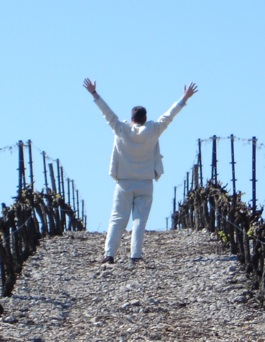Breakfast in Burgundy
12 January 2015
Decanter Magazine – February 2015 issue – Steven Spurrier.
“Raymond Blake, wine editor of Ireland’s Food & Wine magazine, is a dashing Dubliner married to Fionnuala, the city’s premier classical violinist, to whom he has dedicated this book. Under the subtitle A Hungry Irishman in the Belly of France, he treats the reader to a two-decade romp through their first idea of buying a house in the Cote d’Or to becoming part of the Burgundy furniture. People, places, endless menus – some simple, some inspiring – and bottle upon bottle, all are recounted in a manner as gloriously coloured as the roof of the Hospices de Beaune. If you already own Jasper Morris MW’s approachable encyclopaedic tome Inside Burgundy, this will complete the picture, bringing Burgundy alive on a daily, seasonal basis.
Having shared the author’s passion for la table in the Veneto and a memorable dinner at Dublin’s Kildare Street & University Club (unsurprisingly he serves on the Wine Committee there), I knew what to expect: this is personal experience at an emotional level. When my wife and I lived in France in the 1970s, we, too, bought a house in the Cote d’Or – no running water and not much roof – and were there most weekends from Easter to the Hospices de Beaune weekend in November. My memories of those years were fading until Blake brought them all flooding back. He says that ‘Burgundy must be enjoyed by the senses first, the intellect second.’ This is a book for the senses.”
Comments
The Soul of Musar
12 January 2015
THE SOUL OF MUSAR
NOTE: This is the exact text of an article I wrote about Serge Hochar and Musar nearly 15 years ago.
Chateau Musar from the Lebanon has long been regarded as one of the most individual, even idiosyncratic, wines in the world. Raymond Blake meets Serge Hochar, the man behind Musar.
Friday 4th September 1992. Exactly 10 years before the publication of this issue of Food & Wine. Myself and a couple of like-minded friends gather in one of our houses for dinner. Four red wines are served blind. Our host tells us that they are all from the 1978 vintage but no more. Then the fun begins. A quartet of glasses containing a sample of each wine is carefully arranged in front of each diner. Much swirling and sniffing, slurping and swallowing is followed by baffled, helpless silence. Michael Broadbent’s old adage about a glimpse of the label being worth 50 years’ experience in blind tasting sticks obstinately in my mind. Surreptitiously I glance around the room looking for clues. An empty bottle would be too much to hope for but perhaps a cork? Or even a stray bit of foil from one of the capsules? Not a hope, our host is a thoroughgoing individual and has done his job well.
I remember that we were unanimous about which wine we preferred and some wild and erroneous guesses were made as to its identity. Then somewhere out of the haze of confusion and conflicting thoughts I felt I discerned something familiar and with a certainty more assumed than real I announced that the wine in question was Chateau Musar. We were all taken somewhat aback by the fact that I was right and were practically bowled over when we discovered the pedigree of the wines we preferred it to: Chateaux Lynch-Bages, Ducru-Beaucaillou and Leoville Las Cases, all classed growth clarets with stellar reputations. If truth be told I think we all contemplated some furious back pedalling at this point but good sense prevailed and instead we revelled in the quality of the Musar. The Ducru and the Lynch-Bages were good too though the Leoville was adjudged to be below par. The evening, however, belonged to Musar.
Founded in 1930 by Lebanese businessman and banker Gaston Hochar, Chateau Musar is now run by his sons Serge and Ronald, and his grandson Gaston. The winery and cellars are still housed in the 18th century castle in Ghazir, chosen by Gaston senior in 1930, some 15 miles north east of Beirut. The cellars house over one million bottles of maturing wine right back to and including the first vintage, 1933. Today Serge Hochar explains that his father’s decision to establish Musar was prompted by disillusionment with the banking business: “I think he was very disappointed with the banking problems which happened after the first world war, many people did not pay back the money.” Nevertheless Hochar senior did not confine himself to the wine business and today Serge Hochar is the same: “I am a civil engineer, I am a promoter, I am in real estate, the wine business is one side of my business… I am a philosopher of the wine business.” A major understatement if ever there was one.
Try getting him to talk about any of the usual topics on the rota that forms the bread and butter of any interview with a winemaker and he will dabble with the subject before slipping away to more favoured areas like the true meaning of life. His interest in philosophy stems from the time, in 1964, when he had to spend three months in bed recovering from a broken femur. “I read all the books of philosophy I could and I learned; but basically I did not want to have work myself. I wanted to be a hermit in the mountains, I wanted to retire and observe the universe with no link to those things…” However, due to the fact that he was the eldest, the more prosaic concerns of running the family winery held sway and do so to this day. Hochar had taken over from his father in 1958 in a most emphatic fashion. When asked by the older man what it would take to get him involved, the son replied: “I want to be an engineer I don’t want to be in the wine business. If you want me to take over the winery – you leave.” His father acquiesced with what his son now acknowledges was a “blunt” demand, “so I took over with no knowledge of nothing.”
His first vintage was the 1959, a wine he still reckons to be the best he has made. At this time he was still studying engineering and spending his summers in Bordeaux thanks to a long standing family connection, but he had yet to undertake any formal study of oenology. Only when he had qualified as an engineer did he do so. The link with Bordeaux had been established when Ronald Barton of Chateau Leoville-Barton was stationed in Lebanon as a major in the British Army during the second world war. He became very friendly with Gaston Hochar to the point where Hochar named his second son after him. Of course Musar itself is strongly linked to Bordeaux by the fact that one of its component grapes is Cabernet Sauvignon. In some vintages it can carry many of the hallmarks of Bordeaux in terms of elegance and structure, but it also has more opulent richness and warmth, the sort of qualities one might expect from a southern Rhone wine. Which is hardly surprising when it is learned that the other components of the blend are Cinsault and Carignan.
The grapes are grown in Lebanon’s Bekaa Valley and taken by truck across the mountains to the winery in Ghazir. Time was, during that country’s civil war, when such an activity was fraught with danger, to the point where no wine was made at all in 1976 and 1984. That Hochar persevered through these grimmest of times says much about his character and the tough core that must rest beneath the gentle and affable exterior. The vineyards lie at an altitude of about 3000 feet, which helps to mitigate the high summer temperatures. For the journey to the winery some sulphur is added to the grapes to keep them in good condition but apart from that the winemaking is resolutely simple. One sentence neatly encapsulates Hochar’s approach: “When you are a winemaker you have the luck to work with something that is alive and you should never kill it.” There is no chaptalisation, no adding of acid, no fining or filtering. Fermentation takes place in concrete vats and the wine spends an extended time in them before being transferred to French oak barriques from Nevers for anything between 12 and 24 months. Then it is time for another stint in the vats before the separate varietals are blended by Hochar about three years after the harvest. After bottling the wine will be cellared for another couple of years before release. It is next to impossible to get precise details of the complete process from him for he works very much by instinct and does what he wants when he wants. It’s winemaking with a dose of alchemy and perhaps even a touch of wizardry thrown in. Thus there can be quite a noticeable variation in Musar from one year to the next, irrespective of the seasonal differences from vintage to vintage.
Such an approach is admirable when you hear it enunciated by Hochar in person, but bottle variation (particularly amongst bottles from the same vintage) is not something that the modern wine drinker is especially tolerant of. Hochar would point out that each bottle has a life of its own and develops in its own way. Indeed he was completely unperturbed when a bottle of the 1980, served at a tutored tasting in Dublin recently, was found to be seriously out of condition. A second bottle was noticeably better but far from being the best in the tasting. Depending on your taste that accolade belonged to the 1993 or the 1995. The older wine had a rich, savoury nose and a delicious, mouth-watering succulence on the palate with a finish that was warm and satisfying. Its younger sibling was more perfumed, the palate more elegant and less robust, the finish long and lingering. Both spoke more eloquently than anyone, even Hochar, could about why Musar has been so successful. It has a beguiling, indefinable character that resists pigeon holing. At this time or that it can be likened to one wine or another but in truth it is a true individual and exists in a category of its own. As such it should be cherished. The wine world is galloping headlong towards a future of big brands and not much else. Generally they are competently made but they are also bland and boring and one gets the impression that they are made not so much to please all palates as to offend none. That criticism could never be levelled at Musar.
Today, amongst wine lovers, it is one of the best known wines in the world though it wasn’t always that way. Hochar undertook his first overseas sales trip in 1967: “I took 12 half bottles with me and flew all over Europe, from Finland to Oslo to Ireland… everywhere… and the only place where I succeeded was Ireland.” Establishing a toehold in the export market turned out to be a prescient move: “I was not aware that eight years later the war would happen in my country and that it would be destroyed and I would have no other market than the world.” At the outbreak of the war in 1975 exports accounted for a meagre three per cent of production; by the time it ended in 1991 the situation was reversed and 97 per cent was then going overseas, the lion’s share to the UK. These days about 10 per cent is sold on the home market. Hochar wishes it were more but he is a victim of his own success: “the whole market has exploded… it is sad to say that we are not in Lebanon… but the tendency will be I hope, in a couple of more years, back to something more normal, let’s say 75:25.” It’s an ironic turnaround for Hochar who, when he set out in 1967, had the aim of achieving a 50:50 split between domestic and export markets.
Since then he has carried his message far and wide and in turn the world has beaten a path to his door. He is unique in an age when that term is used with wanton and inaccurate abandon. His approach is refreshingly different. It makes a wonderful change from the legion of winemakers who can only talk about their wines in terms of facts and figures, details that are as dry as tinder and about as interesting. Everything in their world can be precisely measured and controlled, any characteristic of the wine dissected and analysed. I call it “winemaking by numbers”. But does the wine have a soul? Chateau Musar has a soul and its name is Serge Hochar.
Article first published in the September 2002 issue of Food & Wine Magazine, Ireland.
Breakfast in Burgundy
24 November 2014
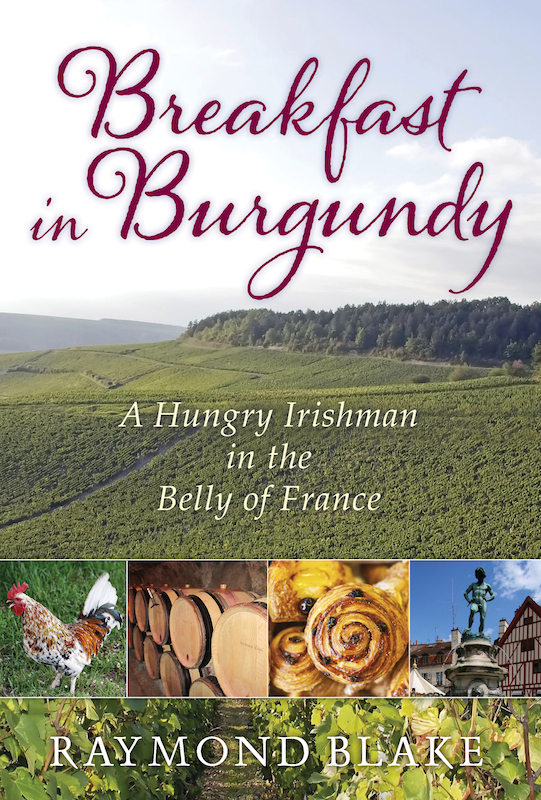
BREAKFAST IN BURGUNDY
It was six years in the making but I am now delighted to report that my latest book Breakfast in Burgundy was published in New York recently. There’s limited ‘physical’ availability on this side of the Atlantic just yet but deliveries from Amazon have reached the length and breadth of Ireland & the UK – and points further away too, as far as New Zealand in fact. Check these links to place an order for delivery before Christmas – it makes the perfect stocking filler.
amazon.co.uk amazon.com
"An Under the Tuscan Sun set in fabled Burgundy, Irish wine writer Raymond Blake's lyrical, and personal, memoir of falling tangle-footedly in love with a grape (Pinot Noir), and then a region where it reaches its apotheosis, to a ramshackle cottage that he and his wife impetuously purchase to embrace their seeming cockamamie dream of residing there, is as heartbreaking and funny and emotionally honest as any Pinotphile's wallet-emptying odyssey for that singular levitational moment when a truly great Burgundy takes him through the whole fairy tale three-act narrative to sensorial sublimity and, finally, vinous redemption." - Rex Pickett, author of Sideways
"'A hungry Irishman in the belly of France'--what self-respecting female foodie wouldn't be hooked by that line? Blake's book romps along with pace and energy and provides a giggle on every page; it's about the food, sure, but the travel snarl-ups, home-reno dramas, and his conversations with wistful winemakers were highlights for me. Loved it!" - Yvonne Lorkin, wine writer
"A charming and witty read that delightfully evokes the Burgundian countryside, its food, wines, and its people; a book that made me want to immediately return to this wine-lover's jewel of France." - Chris de Burgh, singer-songwriter
READER COMMENTS
“Blake balances wit, charm and emotion beautifully to deliver a lively but touching story of his connection with this great wine region. An old-world Sideways, if you will. I think it'd be a great present for any wine-lover this Christmas.” (amazon.com)
“This is a suburb read; well written and entertaining. It would make the perfect Christmas gift - especially for anyone who has been to France, who likes food and has ever had that dream of owning a home there.” (amazon.co.uk)
Burgundy
15 April 2014
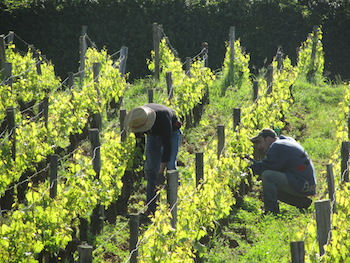
“Sangliers sur la ligne,” said the announcement as the TGV, France’s high-speed train, ground to a halt somewhere between Paris and Burgundy. We got a good view of the wild boar, about a dozen of them, as they left the tracks and sauntered across a field before disappearing into some forest. Then we were on our way again. Read More...
Taste of Tuscany
18 November 2013
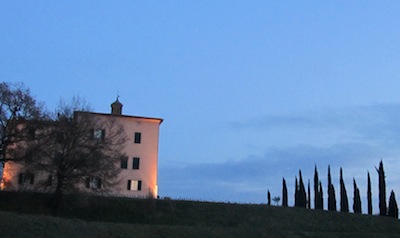
Oh, to be a crow in Tuscany, land of the rolling hill and the ever-winding road. Your destination is glimpsed long before you reach it, particularly if it is a hilltop town such as the multi-towered San Gimignano. Read More...
Wine Fraud!
05 March 2013
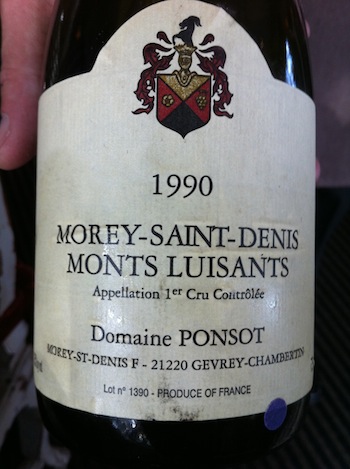
Fake: a thing that is not genuine; a forgery or sham.
Counterfeit: a fraudulent imitation of something else.
Call them what you will but the bottles of Domaine Ponsot wines consigned for sale at an Acker, Merrall & Condit auction in New York on 25th April 2008 were definitely not genuine. Most definitely not. Read More...
Screwcap - Cork's Saviour?
31 January 2013
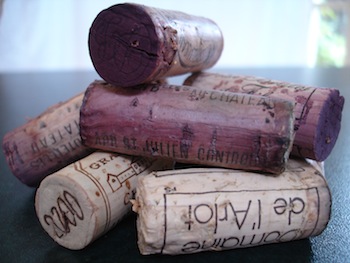
The cork industry should welcome the Stelvin screwcap closure as a saviour, not a villain. A bold statement, yes, but picture this: when Food & Wine came on the scene 15 years ago cork ruled the roost; never was a screwcap seen in any of our tastings. But it was a despotic rule Read More...
Go West
06 December 2012
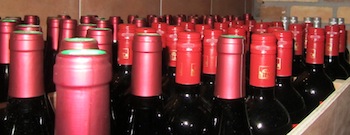
When the dark days of January finally show some signs of brightening into spring, and a month of prayer and fasting draws to a close, it is time to go west for some much needed indulgence… Read More...
Show Stoppers
04 December 2012

Last weekend’s Food & Wine Magazine Christmas Show at the RDS attracted great crowds and from my point of view it was certainly the most successful to date. Never before have I had such a wide range of wines from which to choose my matches for the dishes being cooked by a host of Ireland’s leading chefs on the Chefs’ Stage. Read More...
Forget Sherry!
28 November 2012
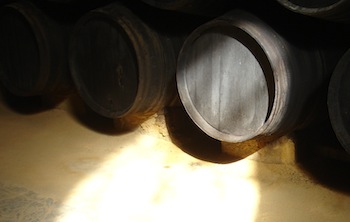
Say instead: Fino, manzanilla, amontillado, palo cortado, oloroso… Can any other wine style or region boast such a splendid a quintet of evocative, mellifluous names as this? Roll them on your tongue, savour them, hear how they resonate. To lump them all together under the prosaic term ‘sherry’ seems such a travesty. Read More...
The Douro Valley
28 November 2012

As befits the world’s oldest demarcated wine region, the Douro Valley makes mincemeat of any descriptive superlative hurled at it, no matter how poetic it might be. Established only by dint of soul-destroying toil in torrid summers and bitter winters, it can safely be asserted that if it was still virgin territory today nobody in their right mind would think of planting vines there. Read More...
Natural Wine
12 September 2012
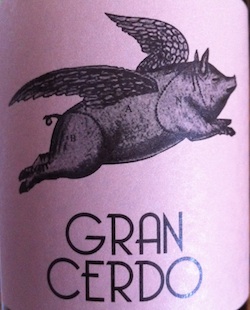
The wine world always needs a fiery debate to sink its teeth into; under-garments were once tied in knots when the use, or overuse, of new oak was discussed; then came the cork v screwcap debate, which now simmers on a back burner, allowing for rational rather than hot-headed debate. Step forward ‘natural’ wine Read More...
Argentina Part II
19 May 2012
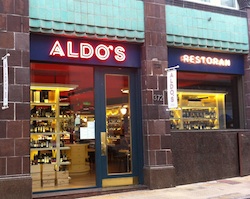
Despite appearances there’s wine beyond Mendoza, Argentina’s principal region that accounts for the lion’s share of production, and garners most of the attention from trade and consumers in the process. Down south there’s Patagonia, which, between its sub regions, Río Negro and Neuquén, is home to about 4,500 hectares of vineyard. Read More...
Argentina Part I
18 May 2012

Remember the Renault 12? The small family saloon with the funny, ski-slope boot that has all but disappeared from Irish roads? Well, it still rules in Argentina, specifically the city of Mendoza, capital of that vast country’s eponymous principal wine region – as I had plenty of time to observe when stuck in early morning traffic on my way to the Luigi Bosca winery recently. Read More...
Champagne
19 April 2012

Champagne. There is no other name or phrase in the whole world of wine that can generate the same response as enunciation of that single word: ‘Champagne’. Thoughts of celebration, images of carefree bounty, success, romance, good fellowship all bubble to the surface at the mention of it, just as surely as the bubbles in the wine itself. Read More...
World Gourmet Summit - Singapore
09 December 2011

The double-decker Airbus A380 really is a big plane and you only realise how big as you wait in the departure lounge ready to board, along with hundreds of other passengers who, you tell yourself, must obviously be destined to board three or four separate flights. Not a bit of it. The plane easily swallows up a crowd that looks as if it could go a long way towards filling the Aviva Stadium. Apart from that it is pretty ordinary, much like any other plane, unless, that is, you are sequestered in luxury up front, a treat that will have to wait for the day I win the Lotto. Read More...
Gourmet Abu Dhabi
01 May 2011
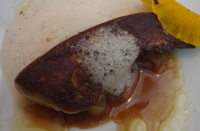
Terror, pure and refined, is not what you expect when attending a gourmet festival. When that festival takes place in Abu Dhabi, however, and when a visit to Ferrari World, home to the world’s fastest roller coaster is on the programme, that is precisely what you get. An agonising 92 seconds on this vicious, snaking monster brings a whole new meaning to the phrase ‘white knuckle ride’. Enough said. Read More...
White Mischief
01 April 2011
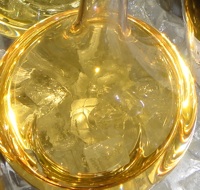
You can tell by the colour. Honey-gold when it should be no deeper than full yellow. And the smell. Caramel, marzipan and nuts. In other words heavy, sweet and full, like a cheap perfume, with no ‘brightness’, no fruity tingle. The taste follows on dismally from this sad litany: lacking in life and ‘bounce’, usually low in acidity, plodding rather than fresh, fit only for flinging down the sink, certainly not to be sipped and savoured. I speak of prematurely oxidised white Burgundy. Read More...
Mister Riedel
01 March 2011

When it comes to polish, probably the only thing shinier than an elegant Riedel wine glass is Mr Riedel himself. Scion of the family dynasty, Maximilian J Riedel, visited Dublin before Christmas to present a pair of master classes for the trade and general public. Read More...
The House of Krug
01 January 2011

Krugist(e): Noun, m/f, a lover of Krug champagne, completely besotted by the richness and depth of the style, regards other prestige cuvées, especially the ‘bling’ ones, with complete disdain, has a tendency to bore when speaking on the subject, recently worried that Krug has become more user friendly, less forbidding and, heaven forfend, more ‘popular’. Takes childish delight in telling friends that it does not rhyme with ‘jug’, it is Krug as in ‘Kroog’.
Austria Moves Forward
01 November 2010

Austria is on a roll. In 2009, as the world economy tumbled into the abyss, her wine exports reported a healthy increase of 16%, achieved at a time when all other Austrian exports declined by 20%. Leading the charge were traditional markets such as Germany and Switzerland, while relative newcomers like the Netherlands, Sweden and Japan all posted healthy increases. Read More...
The Douro Boys
01 October 2010

There is nowhere like the Douro Valley. Nowhere. Words and superlatives are stretched to breaking point to describe it and then discarded when found to be totally useless. The message is simple: if you are going to visit only one wine region in your life and you want stunning, rugged, raw, primal beauty then get yourself to the Douro. The vistas here are not picture postcard pretty. The vineyards are not manicured. No make-up has been applied. Read More...
Veneto - One Coin, Two Sides
01 September 2010

The coin that is the Veneto region of Italy presents two radically different faces to the world. Firstly, there is Soave, fruity and perfumed and all too easily dismissed as bland and insipid. Secondly, and way out at the other end of the style spectrum, is Amarone, Valpolicella’s ultimate expression. They could hardly be more different, one from the other. Read More...
Hospices de Beaune Auction - November 2009
01 May 2010
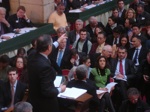
It is early afternoon on Sunday 15th November 2009 in Beaune, wine capital of Burgundy, and a gentle drizzle is falling. By rights the streets should be deserted, with all good citizens comfortably enjoying the family lunch, perhaps breaking out a runny époisses or a fragrant comté once the main course has been dispatched. Read More...
Future Gazing - Wine to 2020
01 March 2010

I tend to bristle when people tell me that studying history is a waste of time: “All those dates and battles that you have to memorise – what’s the use of that?” I try to explain that it is much more than that, pointing out that the proper study of history enables us to see forward by looking back. Read More...
Mosel Magic
31 August 2009

Exactly six years ago I wrote: “…to evince an interest in wine in general while ignoring German Riesling is like claiming to study literature while disregarding poetry.” Those words remain as true today as they were then, yet an alarming number of wine drinkers continue to disregard the poetry. In Germany’s Mosel region (also known as Mosel-Saar-Ruwer) the poetry reaches a peak of perfection that is unmatched by any other wine region in the world. Reaching such heights, however, is no easy task and calls for a high-wire balancing act between sweetness and acidity. Veer in favour of the former and you end up with sugar-water. Over-emphasise the latter and the result is a teeth-jarring concoction utterly devoid of charm. Get it right and every sip of your wine tingles with excitement. Read More...
Driving to Burgundy
01 April 2009


Those vineyards qualify as some of the most fragmented and parcellated in the world. Thanks to the Napoleonic code of inheritance, holdings are continuously divided between all heirs. Add to this changes of ownership through marriage and purchase and the whole patchwork becomes baffling in the extreme. Read More...
Fowl Play
01 June 2008

It is Easter Monday in Burgundy and the temperature is hovering around zero. Snow has been falling gently since midnight and now the fields and vineyards are generously blanketed. The bare branches of the trees carry a thick icing of snow too, but the roads have remained clear and traffic is moving easily. Except, that is, for those hardy gastronomes who are driving to La Ferme de la Ruchotte for their lunch. Read More...
